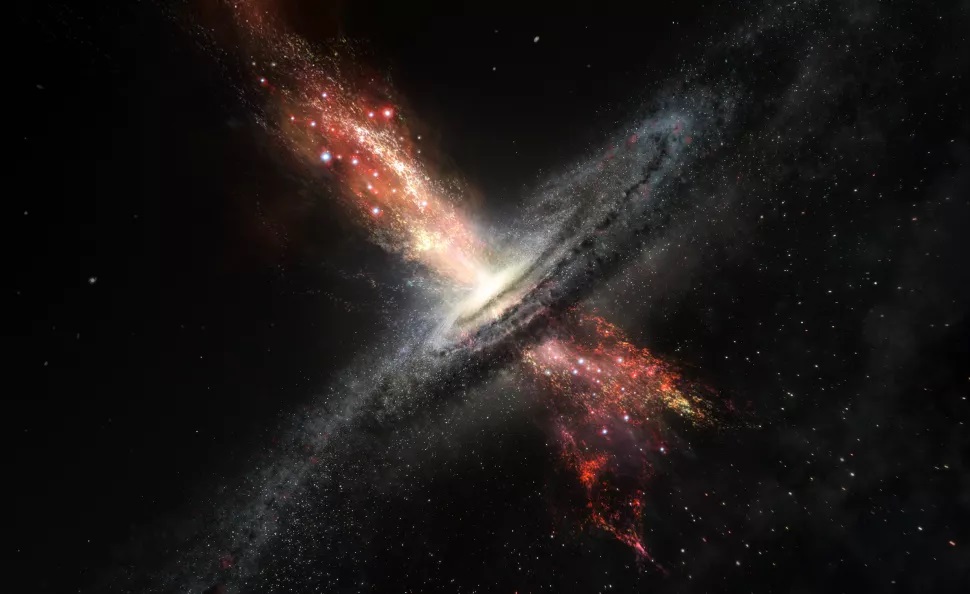Einstein’s Misunderstanding of Time in the Time-Invariant Universe
Astrophysics, Relativity
DOI:
https://doi.org/10.14331/ijfps.2021.330143Keywords:
Space, Time, Cosmology, Olbers’ paradox, AGN-sAbstract
Einstein has kept time as the dimension of the space-time continuum that is supposed to be a fundamental arena of the universe. Our research confirms time is the duration of changes, i.e., motion run in the time-invariant universal space that has Euclidean shape, it is infinite. Black holes in the center of galaxies are rejuvenating systems of the universe. In these black holes old matter is transforming back into the fresh energy of elementary that AGNs are throwing in the intergalactic space in the form of huge jests. These jets are fresh material for new star formation. The universal process of continuous rejuvenation is eternal.
Downloads
References
Ashby, N. (2002). Relativity and the global positioning system. Physics Today, 55(5), 41-47. https://doi.org/10.1063/1.1485583
Einstein, A. (1920). Relativity: The Special and General Theory (Methuen & Co., London, 1920), Chap. XXII. 11The International System of Units (SI), edited by BN Taylor, NIST Special Publication(330), 5.
Fahr, H. J., & Heyl, M. (2020). A universe with a constant expansion rate. Physics & Astronomy International Journal, 4(4), 156-163. 10.15406/paij.2020.04.00215
Fiscaletti, D., & Sorli, A. (2017). Searching for an adequate relation between time and entanglement. Quantum Studies: Mathematics and Foundations, 4(4), 357-374. doi: 10.1007/s40509-017-0110-5
Fiscaletti, D., & Sorli, A. S. (2014). The Infinite History of NOW: A Timeless Background for Contemporary Physics: Nova Publishers.
Harari, Z. (2019). Analytical Resolution of the Dark Night Sky (Olbers') Paradox. Astronomische Nachrichten, 340(6), 510-524. https://doi.org/10.1002/asna.201913540
Harrison, E. (1964). Olbers' paradox. Nature, 204(4955), 271-272. https://doi.org/10.1038/204271b0
Knutsen, H. (1997). Darkness at night. European Journal of Physics, 18(4), 295. https://doi.org/10.1088/0143-0807/18/4/010
NASA. (2014). from https://wmap.gsfc.nasa.gov/universe/uni_shape.html
Sarkar, S., & Jeffries, B. (2002). The solution to Olbers' paradox. Physics World, 15(10), 17. https://doi.org/10.1088/2058-7058/15/10/27
Sorli, A., Fiscaletti, D., & Gregl, T. (2013). New insights into Gödel's universe without time. Physics Essays, 26(1). https://doi.org/10.4006/0836-1398-26.1.113
Šorli, A. S., & Čelan, Š. (2020). The End of Space-time: Physics-Mathematics. International Journal of Fundamental Physical Science, 10(4), 31-34. https://doi.org/10.14331/ijfps.2020.330139
Šorli, A. S., & Čelan, Š. (2021). Schwarzschild energy density of superfluid quantum space and mechanism of AGNs’ jets. Advanced Studies in Theoretical Physics, 15(1), 9-17.
Vidav, I. (1959). Rešeni in nerešeni problemi matematike: Mladinska knjiga.

Published
How to Cite
Issue
Section
License
Copyright (c) 2021 Fundamental Journals

This work is licensed under a Creative Commons Attribution-NonCommercial 4.0 International License.












